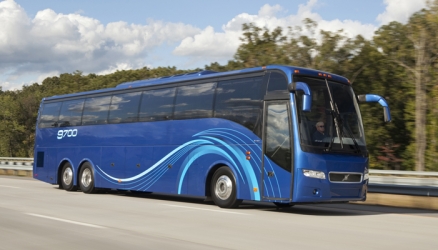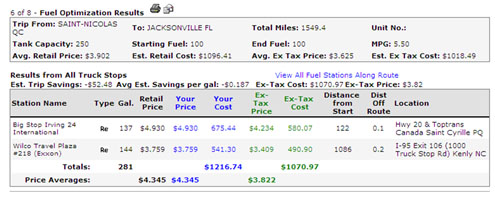
The road ahead includes new models for niche markets
By David Hubbard

Prevost Liaison 2.0 is a business tool that allows operators to manage their companies and fleets with greater accuracy and efficiency. Prevost says it is the only motorcoach manufacturer to develop and implement its own integrated telematics system, which now comes standard on Prevost and Volvo coaches.
This advanced vehicle management system provides key operating information by means of wireless communications and the Internet to increase fleet efficiency and improve customer service. Liaison 2.0 delivers information to operators on driver and vehicle performance that can help training, and may include data related to adherence to speed ranges; time in the RPM sweet spot, use of cruise control, as well as ESP.
“Prevost Liaison keeps operators connected to their motorcoaches and drivers from any computer or mobile device,” says Prevost Director of Marketing Michael Power. “They have password-protected access from anywhere a high speed connection is available.”
Liaison 2.0 continuously monitors the electronic systems, which include the engine and DPF emissions, transmission, ABS, tire pressure monitoring system and the Prevost Electronic Stability Program (Prevost ESP).
“The system reads fault codes from the various electronic systems and builds a daily report of all faults, together with the ECU hardware and software part number,” says Power. “This report is available from the Liaison Web Page and is useful info to keep track of the condition of the vehicle.”
Designed to increase productivity, improve safety and reduce operational costs while monitoring driver and vehicle performance, Prevost Liaison filters the mission critical codes and sends alerts as they occur, which show up as a separate report on the Liaison Web page.
The driver uses an easy-to-read Driver Information Display to read and send messages. Critical code occurrences can trigger an e-mail to the office or mobile device. The critical faults come with a snap shot of several parameters indicative of the vehicle state when the fault occurred, such as if the engine is running or not, and vehicle speed and engine temperature. Prevost believes this extra information helps make troubleshooting more efficient.
Liaison monitors the vital statistics for each vehicle randomly at any time or on an established schedule. Vehicle data reports include information on fuel consumption, distance traveled, and resulting MPGs.
Power says Liaison 2.0 can help operators determine the rpm sweet spot for each vehicle, as well as monitor driver adherence to the use of cruise control and preset speed ranges and safe driving factors, as well as idling time. It can measure fuel consumption for each vehicle on a weekly basis, which can help to reduce the possibility of fuel theft.
Liaison 2.0 utilizes a cellular network to improve signal reliability and provide wider coverage.

An application programming interface (API) supports connections to transport management systems, allowing more efficient data transfer with more data, and more often by reporting every five, 10 or 15 minutes.
Prevost says the improved real-time fault alerts are now more representative of current vehicle status. The system shows current hardware and software installed in the vehicle for easier troubleshooting, data snapshots of fault alert instances and the status of the coach at time of the alert.
Operators can configure fault alerts over the air, as well as customize them for each vehicle and schedule them up to three times per day, while the default is once per week.
An access link to existing management systems allows communications and preset customized messages to and from drivers and dispatch. BR
